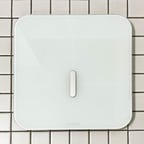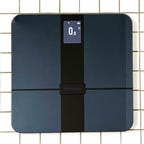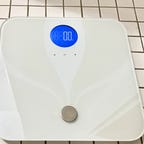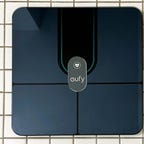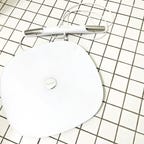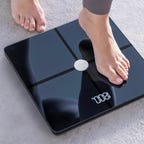
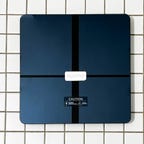
Best smart scale with user-friendly app
Renpho Smart Wi-Fi Bluetooth Body Fat Scale-Premium
View details
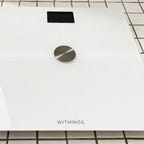
Smart scale with the most third-party app connections
Withings Body Plus
View details
Losing (and gaining) weight requires a blend of consistency, dedication, and the right gym or at-home equipment. If you’re looking for a better way to monitor your weight loss progress or simply track your body weight, a smart scale might be the answer. A smart scale works like a regular body weight scale, but it can also measure other key health metrics like your body fat percentage, heart rate, muscle mass and more.
What’s even better is that you can get this data on your phone, synced up with major health apps like Apple Health and Google Fit, if you opt for a smart scale. This can be massively helpful in comparison to the guesswork one would do to track overall health data and changes throughout the fitness journey. Although a smart scale can be an investment, they’re one of the tools you can use to keep track of your fitness progress.
To pick the best smart scales on the market, I established a control weight recorded during a recent doctor’s appointment, to compare against the numbers served up by these scales. Then I tested the scales at home each day for two weeks, weighing myself multiple times on each scale at the same time of day. Taking into account each scale’s consistency and accuracy, and the measurements it provides, I determined which smart scales are worth buying.
Take a look at our top picks for the best smart scales for 2024. We rounded up the best smart scales that will help you monitor and measure your health and fitness at home.
What is the overall best smart scale?
The CardioBase X earns the top spot in our roundup for smart scales. This smart scale provides valuable insight into your body composition, which includes muscle mass, body fat percentage and heart rate. The scale is also extremely user-friendly and syncs with the most popular apps for seamless connectivity.
Best smart scales for 2024
The Wyze Scale X is the most versatile scale on the list because it can weigh adults, babies, pets and even luggage. The face of the scale is made up of smooth tempered glass and it’s conveniently lightweight and thin so it can be stored easily. It has a weight capacity of 400 pounds, so people of various sizes can comfortably use it. You can create up to eight profiles and customize them accordingly. This scale can read up to 13 body composition metrics, including body fat percentage, basal metabolic rate, metabolic age, muscle mass, body mass index and heart rate. This scale is battery-powered, so it’s not rechargeable.
The Wyze app can be connected to the scale only via Bluetooth. It’s easy to sync up once you follow the steps provided by the app. You can customize your profile based on your gender, age, height and activity level. If you’re pregnant or have an implanted device you can turn on the pregnancy or weight-only mode. The Wyze Scale also connects to integrated apps like Apple Health, Fitbit and Google Fit.
The Wyze scale was consistent through every weigh-in. It provides quick readings, but the LED display panel only shares your weight and body fat percentage. In the Wyze app, you can find the rest of the body composition metrics. The initial page shows you your weight, BMI, body fat and muscle mass. To view the rest you have to click on a drop-down button on the home screen. I thought the app could do a better job of explaining the purpose of each measurement, but it does give you a synopsis for each one as you click through. It also provides a rubric with which range you fall in, but it’s not clear whether that means you’re in a healthy range or not.
The Wyze app can also read your heart rate. Its approach is unconventional since other scales have heart rate built into their software, whereas Wyze measures your heart rate by connecting to the smartphone camera and having you place your finger over the lens to get a reading. You can export your data if you need to share it with your doctor or another health practitioner. Overall, I liked this scale because it is customizable for the whole family, has an easy-to-read app and is inexpensive for all that it offers. Currently, there is a $4 coupon (apart from a 20% discount) that brings the price down to $36.
This scale from Renpho is the best option if you want a user-friendly smart scale app. The scale uses both Wi-Fi and Bluetooth, which is helpful since it means you can save your data in Wi-Fi mode and sync it up later via Bluetooth. This sleek, black design doesn’t look as fancy as the other high-end scales on the list, but it’s the right size to store in your bedroom or bathroom. It’s battery-powered, so if you want a rechargeable scale, this may not be the best choice for you. This scale provides unlimited user profiles and is suitable for weighing infants and adults alike. It’s important to note that, unlike most of the other scales on this list, this one does not have a mode for pregnant people or those with implanted devices.
Connecting to the Renpho app is easy. All you have to do is find your scale on the Bluetooth device list and follow the directions provided for setting it up. Upon weighing yourself, the only metrics this scale displays are your weight, body fat percentage and BMI. When you open up the app, you’ll see up to 13 body composition measurements displayed in a chart. I liked the interface of this app because although it’s simple, the design shows all the information clearly. You can click through each measurement and a colorful rubric tells you where you land compared to standard ranges. You can also view your measurement trends in the form of a line graph across a week, month or year. If you’d like to sync your Renpho scale with third-party apps, you can connect it to Apple Health, Google Fit, Fitbit App and Samsung Health. I also found the weigh-ins with the Renpho scale to be repeatedly consistent throughout the two-week testing period.
Smart scales can get complicated fast, but Renpho keeps things simple. If you’re new to smart scales or want one that isn’t complicated to follow, you’ll be satisfied with this version.
It may not seem like a big deal, but the way a scale shows readings on its display screen can make or break your experience. This is especially true if you have vision issues or are tall and would like your scale to have larger fonts for easier reading. Etekcity’s HR Smart Fitness Scale has the best display screen because the high-resolution graphics make it easy to read your weight, and it depicts a custom set of key measurements on the screen (so you don’t have to go to the app every time).
This scale connects via Wi-Fi and Bluetooth and is easy to set up when you download the Vesync app. Once you’re in the app you can set up unlimited user profiles and customize each one. This smart scale has a 400-pound weight capacity and can also be used in Zero-Current mode, which only reads your weight and BMI. This makes it user-friendly for pregnant people and those with implanted devices like a pacemaker. It also has a Baby Mode, intended to weigh infants and pets.
In the Vesync app, you can customize the display screen to include up to seven body metrics. Besides your weight, this can include your heart rate, muscle mass, bone mass and other options. The scale takes turns displaying each metric instead of overwhelming the screen with all of them at once. When you open up the app after weighing yourself, you can access about 14 body composition measurements. It has a similar layout to the Renpho app, so it’s easy to read. As you click through each metric, you’ll see an explanation about its importance and where you fall on their rubric scale. You can also connect to an Alexa device if you want a hands-free voice control option.
If you’re looking to lose or gain weight, the app also lets you set goals and dial in on your calorie intake and daily activity. That’s where connecting to a third-party app could be helpful, so you have the data all in one place. Other third-party apps you can sync with this scale include Apple Health, Google Fit, Samsung Health, Fitbit and MyFitnessPal.
The Greater Goods Premium Wi-Fi scale fits the bill for a smart scale that can provide basic readings. It’s made up of white tempered glass so it looks sleek and blends in with most bathroom settings. The design works well with the blue backlit LCD screen. This scale can hold up to 400 pounds and uses four sensors to give you accurate results.
Setting up this scale was more challenging than I expected because I had to troubleshoot to make sure it was synced up to my Wi-Fi (this scale doesn’t use Bluetooth). Once the scale and Weight Gurus app were synced up it was simple to use, and the results were consistent during the two-week testing period. A few times, I had issues uploading new data to the app. Eventually, this issue fixed itself, but it could be because my router wasn’t close to the bathroom where I was weighing myself.
What I liked about this scale is that the display screen has a dial that lights up and goes around until it properly calculates your weight. On the same screen, it displays your muscle mass, body fat percentage, bone mass, BMI and water weight in smaller font. If you prefer your data to appear separately on the screen and in a bigger font, then I would opt for the Etekcity HR Smart Fitness Scale instead.
The app is the simplest on the list, which is ideal for basic readings. The only metrics you’ll find besides your weight are BMI, body fat, muscle mass and water weight percentage. The downside is that you can’t click through each metric, nor does it give you an explanation of each one. The most you can do on the app is set a goal to lose, gain or maintain your weight, and view it on a dot graph over a week, month or year. I think some improvement could be made by at least providing an explanation for each metric it provides. Some people prefer these basic readings since too much information can be overwhelming.
The Withings Body Plus scale is a good option if you want the ability to sync up to over 100 third-party apps like Apple Health, Google Fit and MyFitnessPal to your scale. It’s a large, sleek mirrored glass scale that has four high-precision sensors to give you the most accurate readings. It can record eight user-profiles and hold up to 396 pounds. It uses pounds, kilograms and stone measuring units, so it works for various individual preferences. This may not be the ideal scale for pregnant people or those with implanted devices because it does not provide a specific mode that turns off electrical currents. This scale connects to both Wi-Fi and Bluetooth and is easy to set up. The scale comes with carpet feet, which can be placed at the bottom of the scale on each corner. The carpet feet weren’t my favorite accessory because sometimes the scale wobbled on my tiled bathroom floor and I had to reposition it until the surface felt even.
Setting up this scale with the corresponding app, Health Mate, was relatively simple. It was similar to the others where you follow the steps provided in the app and then customize your user profile. I connected to both my Bluetooth and Wi-Fi in the process. You also have the option to customize the readings that appear on the scale’s screen display and set a goal for yourself.
For the most part, the Withings Body Plus scale provided a fast reading, but at times, it lagged. The LED display screen has triangles blinking on each corner as the scale works to get a measurement. When it gathers the information, the triangles disappear and the calculated weight remains steady. Sometimes this takes longer than anticipated, but I’m not sure if it’s the scale’s fault or user error. The weight measurements over two weeks were consistent overall. Sometimes they were off by a couple of ounces or a pound or two, but nothing overwhelmingly different.
I was impressed by the number of third-party apps you could connect with the Withings Body Plus. Although the app only presents a few, you can go into the respective third-party apps and connect the scale through there as well. I stuck with connecting my Apple Health account to the scale and it uploads your step count, any workouts you’ve done and your heart rate. If you like to be connected to multiple apps and want a scale that can handle all of it, you’ll appreciate the Withings Body Plus scale.
Many scales have a limited number of users on their platform, but the Eufy Smart Scale P2 Pro is the best that’s set up for unlimited profiles. The Renpho, Etekcity and Sportneer smart scales also allow unlimited users, but the Eufy smart scale has a better way of displaying each person’s results via its app interface. This scale has a 400-pound weight capacity and can also weigh pets and babies. Additionally, there’s a simple mode you can select if you’re pregnant or have an implanted device.
It has a sleek design and includes high-precision manganese steel sensors, which are intended to read weight changes by up to 0.1 pounds. It’s battery-powered and waterproof, so it’s bathroom-friendly. Once you download the Eufylife app, set-up is easy and the scale has both Wi-Fi and Bluetooth connectivity. You can then set up specific profiles for the people who’ll use it. One thing I would note is to make sure the scale is set to zero before weighing yourself. There were a few times before a weigh-in when I had to pick up the scale and place it back down until I got a zero reading.
The scale display has big numbers for easy reading and the screen also shows your body fat percentage and heart rate. When you open up the app, you’re greeted with a customizable 3D cartoon model of yourself. The app displays your scale readings next to the rotating 360-degree 3D model. As you click through the data, you’ll see a detailed list of other measurements including muscle mass, bone mass, lean body mass, skeletal muscle mass and more.
I liked that the app gives you a practical approach to body recomposition if that’s your goal. Instead of focusing on the number on the scale, you can use the measuring tape provided with the scale to get your measurements and manually input them in the app. This is a helpful way to track changes that the scale may not be able to properly read. If you’re looking for a scale that allows you to have unlimited profiles and a user-friendly interface, then you’ll like the Eufy Smart Scale P2 Pro.
I found the Sportneer Smart Scale has the most detailed metrics on this list, which is ideal for an athlete who wants specific fitness data on their progress. It uses both Wi-Fi and Bluetooth and can save unlimited users weighing up to 396 pounds. This round-ish scale is made of tempered glass and includes four electrodes on the base and another four on the detachable measuring handle — included in the box — to give you the most accurate reading. If you are pregnant or have an implanted device, I would not recommend this scale since it doesn’t have a safe mode where you can turn off the electrical currents.
The setup was complicated because even though syncing up the scale to the Sportneer app was simple, the majority of the data can only be calculated if you’re holding the measuring handle attachment correctly. Without using the handle, you’re only getting your weight reading, which defeats the purpose of having a smart scale. This made things complicated because sometimes the handle reading would be unsuccessful and you’d find yourself standing on the scale for over a minute. When the readings did work, it could take over 30 seconds, which may not seem like a long time, but when you’re trying to get a quick measurement, it can feel like an eternity. If you’re looking for a smart scale that provides information quickly, steer clear of this one.
Once you successfully connect all the data to the app, it’s impressive because you can get up to 14 detailed metrics. I like how the app uses a model of a human body to label each area with specific percentages based on the metrics. For example, on the model, you’ll see how much of your body is made up of inorganic salt, protein, fat and moisture. Beneath that, there’s a color-coded chart that tells you if you’re within a low standard, standard or beyond the standard range. In addition, the app shows a thorough analysis of your muscle fat, obesity, weight control, muscle balance and segmental fat, respectively. If I didn’t know any better, I’d assume that this was the most accurate at-home scale on the market due to all the data it’s able to provide.
It’s no surprise that this scale was consistent with its data during each of the weigh-ins I was able to successfully record. I think this scale would be most appropriate for an athlete trying to keep track of their progress at home. Other settings where it could work are in a gym, doctor’s office or sports team locker room. I can’t imagine the average person benefiting from all the readings, no matter how well-explained they are. If you’re someone who enjoys reading and analyzing in-depth data beyond your weight then you’ll like the Sportneer Smart Scale.
QardioBase X is our pick for the best smart scale because of its customizable functions and ability to be used on different surfaces. Admittedly, it’s large and heavy (weighing about 7 pounds), but the sleek design makes it an appealing piece of technology, even if it’s just a scale. QardioBase X is compatible with Wi-Fi and Bluetooth, can be recharged with USB-C and can read units in kilograms, stone and pounds. It has a weight capacity of up to 396 pounds. It’s suitable for up to eight users and has several modes to pick from, including one for athletes and one called “out of sight” if you don’t want the weight to appear on the scale. It also has modes for pregnant people and those with implanted devices, avoiding potential harm or interference by turning off the electrical currents used by most smart scales to read metrics aside from weight. It’s one of the few scales that functions well on any surface — even a carpet — which is always a plus.
Usually, readings on the QardioBase X were accurate during the daily weigh-ins. The only time I noticed it was occasionally off was during the first measurement. Remember that you may have to weigh yourself more than once to get the most accurate reading.
The Qardio app connects to the scale and has simple steps to sync up and personalize your experience. On the app, you get an extra 12 body composition readings: body mass index, body fat percentage, subcutaneous fat, visceral fat, fat-free body weight, body water percentage, skeletal muscle, muscle mass, protein, bone mass, basal metabolic rate and metabolic age. Ensure your Bluetooth is on so the scale properly connects to the app. As with many other smart scales, you can set a goal weight for yourself and connect to integrated programs such as Apple Health, MyFitnessPal, Samsung Health and Google Fit. The app tells you if each metric is within a low, standard or high range, but there isn’t much explanation beyond that.
The app is not my favorite design because the measurements could be displayed in a more user-friendly way. The default tab has a line graph depicting your weight over time and percentage changes in your BMI, body fat and body water. This is useful to know if you have a specific goal in mind, but it’s not easily digestible as the first form of data you view on the app. The other view, which is easier to follow, shows in chronological order the history of your weigh-ins and time of day, plus a drop-down display with each piece of data collected during your weigh-ins.
FitTrack Dara BMI Smart Scale: I wanted to give this smart scale a chance because it had the most body composition measurements, but it never functioned properly when I weighed myself. The only data it provided was my weight, but it never seemed to capture the rest.
Omron Body Composition Monitor and Scale: I had a hard time setting this scale up. I tried troubleshooting and following the directions it came with, but to no avail.
Best Smart Scale for 2024
| Smart Scales | Wi-Fi, Non Wi-Fi, Bluetooth | Weight Limit | Compatible Apps | Price |
|---|---|---|---|---|
| QardioBase X | Wi-Fi and Bluetooth | 396 pounds | Apple Health, Samsung Health, My FitnessPal and Google Fit | $95 |
| Wyze Scale X | Bluetooth | 400 pounds | Apple Health, Google Fit, and Fitbit | $36 |
| Renpho Smart Wi-Fi Bluetooth Body Fat Scale- Premium | Wi-Fi and Bluetooth | 396 pounds | Samsung Health, Apple Health, and Google Fit | $45 |
| Etekcity HR Smart Fitness Scale | Wi-Fi and Bluetooth | 400 pounds | Apple Health, Google Fit, FitBit, MyFitnessPal, and Samsung Health | $80 |
| Greater Good Premium Wi-Fi Scale | Wi-Fi | 400 pounds | Fitbit, Apple Health, and Google Fit | $27 |
| Withings Body Plus | Wi-Fi and Bluetooth | 396 pounds | Google Fit, Apple Health, Runkeeper, Strava, Samsung Health and MyFitnessPal | $100 |
| Eufy Smart Scale P2 Pro | Wi-Fi and Bluetooth | 400 pounds | Apple Health, Google Fit, and Fitbit | $45 |
| Sportneer Smart Scale | Wi-Fi and Bluetooth | 400 pounds | My Fitness Pal | $70 |
Ease of use: How easy it is to sync up the scale and app using Bluetooth or Wi-Fi. Additionally, how easy it is to interpret the weight and other data provided by the scale.
Design: If the scale is aesthetically pleasing and designed to blend into different rooms.
Consistency: Welooked atweight across the board for two weeks and made sure it was consistent for multiple weigh-ins at the same time each day.
App measurements: We looked at the app interface and the measurements provided, as well as how detailed and easy it is to access and read.
Price: Consider how much you’re willing to spend on a scale. Just because a scale is expensive, doesn’t mean it’s the best option. There are inexpensive scales that can provide the same measurements.
Features: Determine if you’re going to want various measurement modes such as for pregnancy, pets or children.
Accuracy: Smart scales aren’t always accurate and the only way to get the most precise measurement is through a DEXA (or DXA) scan. Consult with a medical professional if you’re interested in this data.
Electrical currents: If you wear a pacemaker or implanted medical device, make sure the scale offers an option to shut off electrical currents. Currents sent by scale are generally safe, but they can potentially interfere with the device and ruin it.
Weight limit: It’s important to consider the weight capacity on a scale since you want to make sure it can handle various weights.
Body image: If you struggle with body image or are recovering from an eating disorder, consider discussing with your doctor if owning a smart scale is the right choice for you. It’s also helpful to know that some scales don’t show you your weight or have a similar mode setting.
App compatibility: If you’d like to sync up the scale to shared apps, make sure your app of choice is compatible with the scale.
Weigh yourself at the same time: To get a consistent reading when using any scale, it’s important to weigh yourself first thing in the morning before you’ve drunk or eaten anything. “You should weigh yourself without clothes, or minimal clothing, and if you do so, try to wear the same clothing each time you weigh yourself,” said Stella Lucia Volpe, professor and head of the Department of Human Nutrition, Foods and Exercise at Virginia Tech.
Volpe recommends weighing yourself no more than once a week. “If you weigh yourself more than that, you will see fluctuations in your body weight, and it may be frustrating if you are trying to lose weight,” she said.
Choose an even surface: You want to make sure your scale is on an even surface otherwise that imbalance will throw off the reading. Make sure to weigh yourself in the same place each time.
Keep in mind that the smart scale can be flawed: Remember that just because a smart scale can offer more data than an analog scale doesn’t always mean it’s better. “Smart scales have not been shown to have high accuracy and cannot be compared to the ‘gold standard’ measures of assessing bone mineral density and body composition as it relates to body fat and lean body mass, which is via using dual-energy X-ray absorptiometry (DXA),” said Volpe.
Most people don’t have access to a Dexa scan, so the next best thing is a smart scale. “The smart scale can provide an estimation of body fat and total body water; however, note that the ‘gold standard’ ways to measure these would provide the more accurate data,” Volpe explains.
Make sure it’s set to zero: As with any scale, you want to make sure that it’s set to zero so you get an accurate reading.
Remember your weight fluctuates: It’s easy to get caught up in a number, but remember your weight is a range instead of an exact number and will fluctuate throughout the day. Fluctuations can be affected if you work out, eat more than normal, go to the bathroom or even if your muscles are sore and retaining fluid.
Know that the data are estimations: Smart scales include data on your heart rate, bone mineral density, total body water, body fat and more. Keep in mind these are estimations based on your age, sex and body weight. Therefore, these scales are not completely accurate. “Knowing that these scales are providing an estimation — but without the highest of accuracy — is important, but can help provide some guidance to the user of these products, especially when many individuals may not have the ability to have their bone mineral density and body composition evaluated by DXA,” said Volpe.
How does a smart scale work?
Are smart scales accurate?
Is a smart scale worth it?
